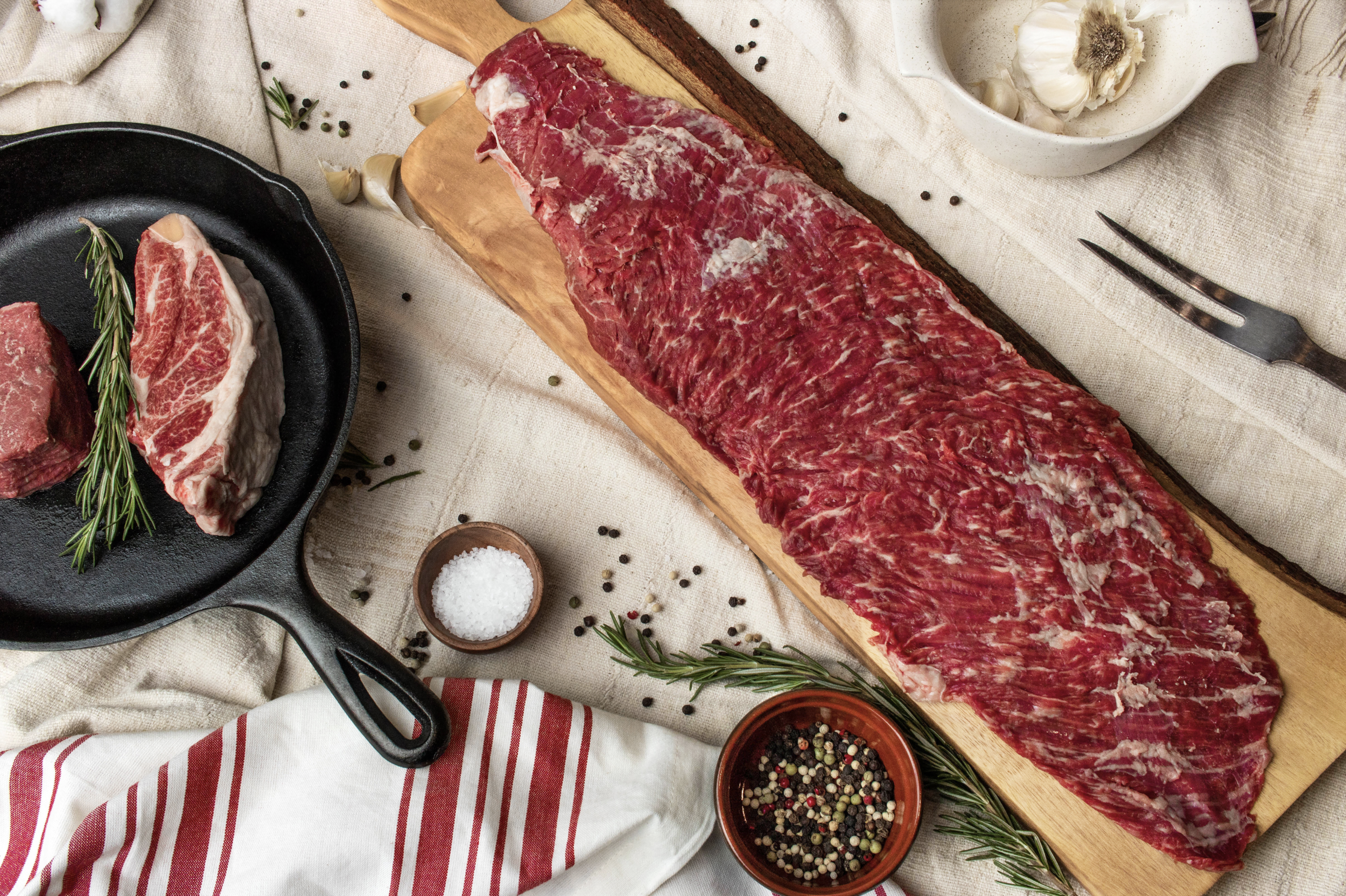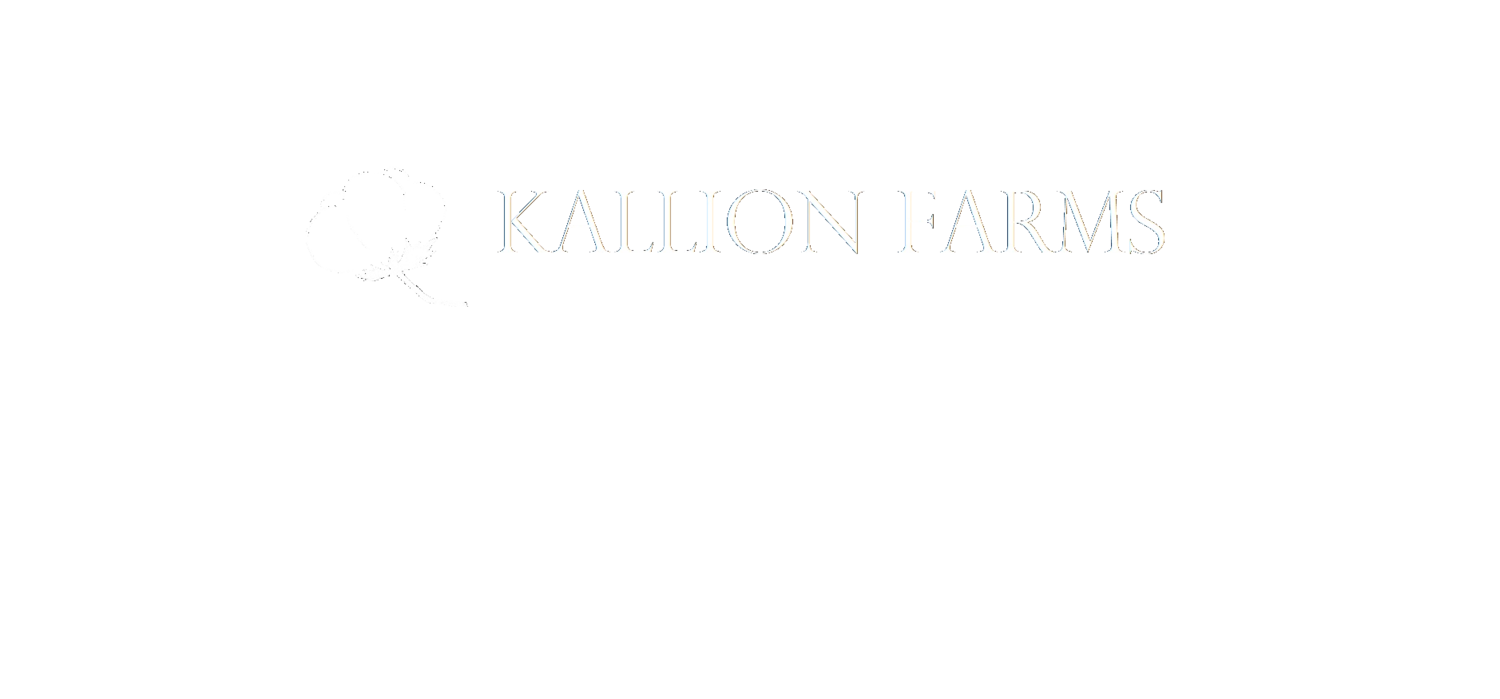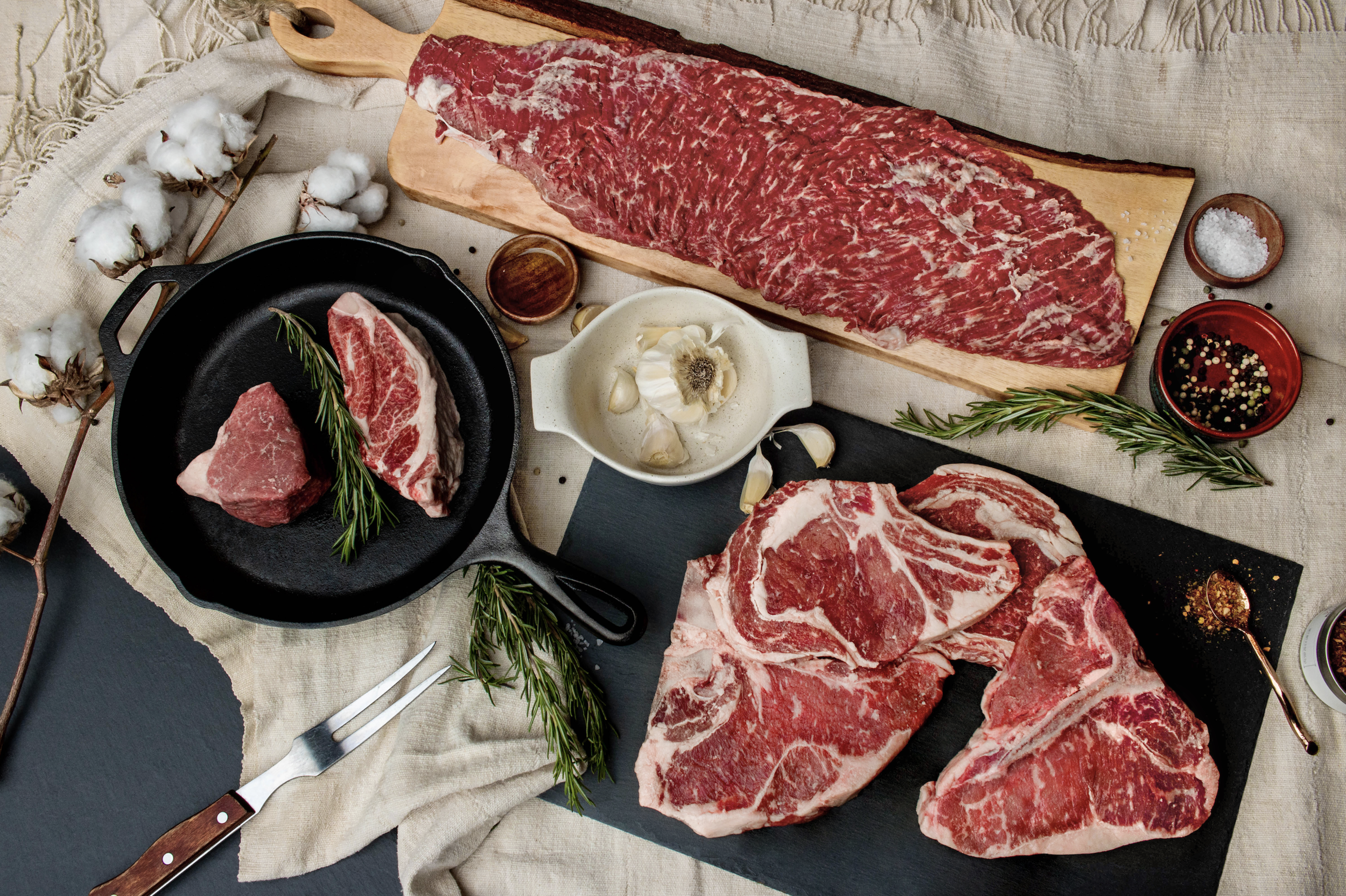At Kallion Farms, we are constantly testing and collecting data to ensure excellence in our product.

Breeding for Profitable Genetics
Written by Grant Vassberg:
If you were to ask a Brahman breeder about the importance of performance, many of them would say something along the lines that the Brahman breed is a beef breed, and that we need to focus on producing the most amount of beef per acre. Or they may say they have been ultrasound scanning animals, and they only keep animals that scan above a certain %. Or that collecting data is important so you can identify the outliers that push the boundaries. Some may say they utilize EPDs, and only use bulls that are in the top 5% of the breed for marbling or a certain trait. However, if a commercial cattleman applied a practical culling management program to any of these “performance cattle” the vast majority would be culled within a few years.
And from my experience, registered Brahman cattle bred for profitability could not be found, they had to be created.
I have been living and breathing Brahman cattle for 25 years under a performance oriented breeding program. There is no doubt that breeding Brahman cattle is in a way an art, but breeding profitable genetics requires gathering data, CORRECTLY understanding the data, and applying this knowledge to your breeding decisions.
First of all, just because a breeder collects data does not mean their program is performance focused. I can time how fast I run a mile on a track, but by no means does that then make me an Olympic sprinter.
And by no means can you use the terms performance cattle in exchange with profitable cattle.
Many breeders say they know that single trait selection is bad. Most breeders would apply this terminology to phenotypic traits, but the same is true for performance traits. An animal that is in the top 5% for WW or YW in reality is a very non-profitable animal and the vast majority of the time, it should be hauled to the sale barn. If an animal was truly in the top 5% of the breed for WW or YW, it would most likely have a frame size that is way too large and could have a dam that is milking too heavily to where she wouldn’t be able to maintain her body condition to breed back. You also have to be cautious of animals that have backdated DOB’s. An animal that is in the top 5% for marbling would most likely have absolutely no power and likely be late maturing sexually and lack in other traits. For example, the record breaking Brahman female for %IMF a few years back I sold because she did not meet our extreme docility requirements. She was sold as an average heifer for an average price.
Also, I have been asked many times about my opinion about how Brahman or Brahman cross steers get discounted heavily on the open market, even though Kallion has proven that Brahman cattle can marble and are easily capable of grading prime. My immediate answer is that yes, Brahman cattle deserve the discount. A steer that grades choice compared to a steer that grades select, all other things the same, has a difference of over $150 per head in retail value. And the Brahman breed as a whole has no data to prove this stereotype differently. In fact, much of the data shows that this discount is validated. The most recent data I have of a Brahman steer test that is not from Kallion is from 2018, and a very prominent breeder that consigned the majority of the steers to the test (33 head), only had 9% grade choice, 76% select, and 15% standard. And when the American cattle industry on average grades choice or better over 70% of time, I cannot understand why someone can claim this prejudice is unvalidated. The fact that steers out of Kallion have graded prime, is much like how NASA has sent men to the moon. Yes, humankind is capable of getting to the moon, but that doesn’t mean the rest of the population (99.99%) is capable of building a rocket and shuttle that can make it to the moon.
An animal that is in the top 5% for lower BW would most likely have a terrible WW and YW. An animal that has a very high REA/100 ratio would have no depth of body phenotypically. This type of phenotype may look like it has a “long” body while on heavy feed, but in reality would have no “performance” as a cow on just pasture.
An exception to the rule of not breeding for extremes in cattle traits is that of temperament. Docility is a trait that to me has no direct negative effect (besides possibly being easier to steal.) Some breeders may say that if an animal is too tame, then they do not take care of their calves as well. The temperament an animal has towards humans, and the overall motherability a female has are two different traits. If you purchased a female that was extremely docile and then later on the same female did not take care of their calf, odds are the animal you bought was originally a bottle calf. And the reason it is so tame is that it was a bottle calf, and the reason it was a bottle calf is that it had a mother who did not want to take care of it. Some breeders say that the temperament of Brahmans all depends on how you raise them. Yes, you can basically brainwash animals into acting more docile by halter breaking them, or by spending many hours of labor handling them. But, the majority of cattlemen who rely on raising cattle for a living can not afford to spend the time or money to brainwash their calves. I do know for a fact that docility is very heritable. When we first got into the business, less than 5% of the calves we raised received a temperament score of 1 out of 5 (1 being tame and 5 wanting to kill you.) After 20 years of collecting data and applying this knowledge to our breeding decisions, 95% of Kallion calves born today receive a score of 1 the day of weaning. I have heard countless testimonies about how naturally docile calves were out of Kallion genetics without any handling whether it be out of registered Brahman cattle, commercial Brahman cattle, or in a F1 production operation. If you were to apply the following program to a registered Brahman operation and cull them unless they wean a healthy calf every 12 months; have no feet issue or udder issues; their calves do not need nursing assistance; they are not aggressive in the working pens and thrive while only receiving the nutrition provided at a standard commercial cattle operation most likely a majority of registered Brahman cattle would be culled. When I took over the Kallion breeding program in 2010 I applied these measures. Out of 900+ head, only 3% of these females remained in the herd after 4 years. And all of the 900+ head were descendants out of the breeds’ most popular bloodlines at the time. Only daughters out of the females that met these requirements were looked at as prospective replacement females for our program.
Someone newer to the cattle industry would most likely assume that registered cattle operations have stricter breeding programs compared to commercial operations. But in reality, the vast majority of the time it is quite the opposite. But to me the explanation why breeders might not cull hard is quite simple, and that is that many brahman cattle are sold for much higher than their true market value. Breeding stock should be incoming producing assets, and a huge portion of the breed is nothing more than a liability. If you purchased a female for $5000+, and two years later her bag blew out would you haul her to the auction where you know she would only bring $750? Or if you paid that much for a female and she ended up only producing a calf every 18 months would you take the hit for over $4000 or wait a few more years? Or if you paid that much for a female and she gave you a calf that had no idea how to nurse, would you take the hit? And if by chance this female which you paid $5000+ actually gives you a calf every year and maintains a good bag, but for some reason every calf she produces is wild as hell, would you take the hit? Odds are that no, you wouldn’t take the hit until you regain your initial investment, and therefore these genetics get propagated.
And for these actual reasons is why many new breeders of registered Brahman give up around 3 years of being in the business.
I by no means can judge. I was actually put into a different situation. I was the breeder and manager for six years of Kallion Farms and had the freedom to apply the program I knew was needed for the Brahman breed to survive in the states. Seven years ago the partnership that owned Kallion Farms dispersed, and I purchased 50 registered Kallion Brahman females and the 12 herd sires that had been created under the new program. I did not have to come up with the original investment of buying cattle that most people assumed were bred for profit, but in reality were cattle bred with no profitability traits.
My original investment that I came up with was in cattle created by a genetically profitable breeding program. To this day, we have continued my intensive culling program and have been building the herd based on profitable genetics.
I appreciate progressive approaches to any venture, but the “art” of breeding profitable cattle is in fact a very ironic strategy. The radical thing about a profitable breeding program is that it is avoiding utilizing cattle that are “number 1” in any trait. The “art” of breeding profitable cattle is striving to produce cattle that excel overall. Even though performance breeding for profit may sound intimidating, the end result is priceless. A Brahman female that raises a beautiful calf every year, never gets hoof trimmed, never sees the squeeze chute besides her normal vaccinations, looks good even in a drought, and at most puts her head on your shoulder to get scratched if you have your back to her…. is indeed priceless.

Carcass 101
Marbling
IMF% is the numerical figure ultrasound machines provide that stands for % Intramuscular Fat (marbling). The percentage is a prediction of the amount of intramuscular fat in the ribeye muscle of an animal. Even though this figure is an estimate, it is one of the most powerful tools to the cattleman in today’s industry in selecting cattle with higher quality beef. IMF% and marbling are very similar but the main difference is IMF% is an estimate from a machine and marbling is an estimate of the human eye (the grader).
With an ultrasound machine a trained technician will collect several images between the 12th and 13th ribs of an animal. The images can either be read instantly by computer to determine the IMF% or they can be sent to a 3rd party lab (ex. Cuplab) where these images are then analyzed and results are provided around a week later.
% IMF Quality Grade
2.0-3.0 Select - (Brahman Average)
3.1-3.9 Select +
4.0-5.5 Choice - (Kallion Average)
5.6-6.9 Choice o
7.0-8.5 Choice +
8.6-9.9 Prime -
10.0+ Prime o
When scanning yearlings as we do, we have to take into account that a yearling calf, especially an intact male, would perform differently than a steer calf finished out for slaughter would. Many operations adjust the score for males to a steer equivalent value. Many also adjust for age to more accurately compare an individual to the rest of its contemporary group. We have not adjusted any data we have previously publicized, but feel free to ask us if you ever have any questions.
As a cattleman, it is very difficult comparing actual scan data from different operations. The best way to compare data is within a herd and more specifically within their contemporary group. In our breeding program we select the animals that performed the best within their calf crop to help us improve the quality within our herd. Other operations may have pampered some of their animals since birth, so if you were to buy semen from a show bull who scanned a 4.5% IMF and a BF of .5, you should not expect his offspring to score nearly as a high for IMF in a commercial operation. Animals that combine the optimal combination of quality to Yield Grade should be utilized if you were looking to improve the carcass qualities of your herd.
The average brahman IMF score is from a 2.0%-3.0% and of the ones that have been scanned the average BF is from .3 - .5”. At Kallion Farms, our Spring 2015 calf crop, which averaged 12 months old at scanning, averaged a 4.75 actual IMF and had an actual average BF of .17”.
Tenderness
We have retained ownership of our steers since 1998. Standard kill data is collected along with Warner Bratzler Sheer Force Tests. The Sheer Force Test is where the meat is tested on its tenderness by using a blade that measures the resistance the meat has to being cut.
If the steak requires more than 8 pounds of force to cut, a consumer would normally consider the beef to be "tough," Under 8 pounds would be considered tender.
In some of the first tenderness data collected, our animals ranged from 4 to 25 pounds based on the Warner Bratzler Sheer Force Test. Today, Kallion Farms steers average well less than 5.5 pounds on the Sheer Force Test.



